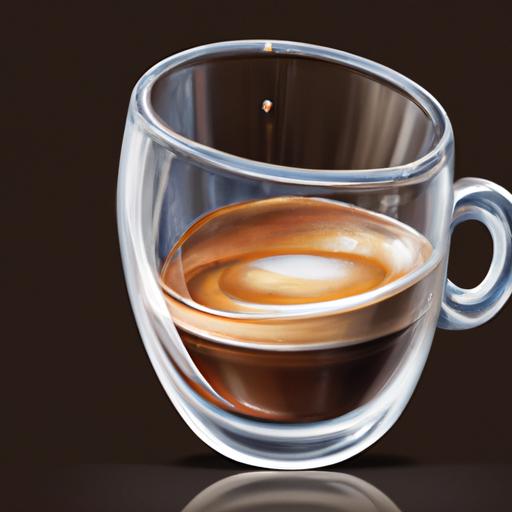For the perfect espresso, tamping is an important step that cannot be overlooked.
It’s a tricky skill to master, however, as it requires a delicate balance of pressure and technique.
If you tamp your espresso too hard, you risk ruining the flavor and consistency of your espresso.
But how hard is too hard? In this article, we’ll explore tamping and all you need to know about it, from the dangers of tamping too hard to the art of tamping, the right amount of pressure, and tips for avoiding common mistakes.
Read on to learn more about tamping espresso and how to do it correctly.
Table of Contents
Short Answer
Yes, you can tamp espresso too hard.
If you tamp too hard, the espresso will be under-extracted and taste sour or bitter.
It is important to tamp espresso firmly, but not too hard, to ensure a good extraction.
If you’re having trouble getting the right pressure on the tamp, practice a few times until you find the right amount of pressure.
What Is Tamping?
Tamping is an essential step in the espresso-making process.
It involves packing the freshly ground coffee into the portafilter before brewing.
Tamping enables the espresso to be brewed evenly and with consistent extraction, resulting in a better-tasting espresso.
The process requires a gentle and even pressure to ensure that the grounds are packed firmly enough to allow for proper extraction, but not so hard that it damages the portafilter or the espresso machine.
The ideal tamp pressure for espresso is around 10-20 pounds.
Too little pressure can result in an uneven extraction, while too much pressure can damage the portafilter or espresso machine.
It’s important to tamp with consistent pressure and avoid pushing down too hard or too soft.
It’s also important to make sure the grounds are evenly distributed in the portafilter, as this will help ensure a consistent extraction.
Tamping is a skill that requires practice and patience.
It’s best to start with a small dose of grounds (around 7-8g) and practice tamping until you get a feel for the right pressure.
The goal is to find a balance between too much pressure and not enough pressure.
Once you’ve mastered the art of tamping, your espresso will taste better and youll be able to enjoy it to its fullest potential.
The Dangers of Tamping Too Hard

When it comes to espresso preparation, tamping is one of the most important steps.
However, it is possible to tamp espresso too hard.
Tamping is the process of packing the ground espresso into the portafilter before brewing.
If done with too much force, it can lead to a number of problems, such as damaged portafilters, espresso machines, and poor quality espresso.
When tamping too hard, the espresso grounds can become compacted too tightly.
This can lead to clogging, and can cause the espresso to become over-extracted.
This can cause a bitter, unpleasant taste.
Additionally, when tamping too hard, the portafilter can be damaged, leading to leaking and other issues.
In some cases, tamping too hard can even damage the espresso machine itself.
Excessive force can cause the portafilter to break, leading to water leakage and other problems.
If the machine is not properly cleaned and serviced after this, it can lead to even more damage.
It is important to use gentle, even pressure when tamping.
This will ensure that the espresso grounds are packed properly and evenly, and that the espresso is extracted correctly.
If done correctly, tamping can provide a consistent extraction and a better tasting espresso.
To avoid tamping too hard, it is important to use the right tools for the job.
A tamper that is too large or too heavy can easily cause damage to the portafilter and espresso machine.
Additionally, it is important to use a consistent pressure when tamping.
This will help to ensure that the grinds are packed properly and evenly.
It is also important to make sure that the espresso grounds are level before tamping.
Uneven grounds can lead to uneven extraction, resulting in poor quality espresso.
In conclusion, tamping is an essential part of espresso preparation.
However, it is possible to tamp espresso too hard.
This can lead to clogging, over-extraction, and damage to the portafilter and espresso machine.
To avoid these issues, it is important to use gentle, even pressure when tamping, and to use the right tools for the job.
If done correctly, tamping can provide a consistent extraction and a better tasting espresso.
How Tamping Affects the Quality of Espresso
Tamping is an essential part of the espresso-making process, as it allows for consistent extraction during the brewing process.
It is the process of packing the coffee grounds into the portafilter before brewing, and should be done with a gentle, even pressure.
When done correctly, tamping will provide a more consistent extraction and a better tasting espresso.
However, when done with too much force, tamping can be damaging to the portafilter or the espresso machine itself, resulting in poor quality espresso.
This is because the grounds can become too tightly packed and compressed, which can restrict water flow and lead to overextraction.
Overextraction can cause the espresso to become bitter and taste burnt, as well as reducing its body and crema.
It is important to use the right amount of pressure when tamping, and to avoid pushing down too hard.
This can be achieved by using a tamper that is properly sized for the portafilter, and by using a consistent pressing motion.
The goal is to create an even and level surface of grounds, so that the water will flow evenly during the brewing process.
Overall, tamping is an important step in making a good cup of espresso.
If done correctly with the right amount of pressure, it can ensure a consistent extraction and a better tasting espresso.
However, it can be damaging to the portafilter or the espresso machine itself if done with too much force, so it is important to use a gentle, even pressure when tamping, and avoid pushing down too hard.
The Art of Tamping

Tamping espresso is an art form that requires precision and technique to get a perfect espresso extraction.
It is the process of packing the coffee grounds into the portafilter, a filter-like device that is used to brew espresso.
The grounds should be evenly distributed and packed firmly, but not too tightly.
If the grounds are too loose, the espresso will be weak and flavorless, and if too tightly packed, the espresso will be overextracted, resulting in a bitter taste.
Tamping is a delicate process that requires some practice and experience.
The correct technique involves placing the portafilter on a flat surface, filling it with ground coffee, and pressing it down with a tamper.
The ideal pressure should be firm but gentle, and should be applied evenly and consistently over the entire portafilter.
Applying too much pressure can cause damage to the portafilter or machine, resulting in poor quality espresso.
It’s important to remember that everyone has their own tamping style and technique.
Some prefer to use a slow, gentle pressure, while others prefer a more forceful approach.
Ultimately, it is up to the barista to find the right balance between pressure and consistency that produces the best espresso extraction.
What Is the Right Amount of Pressure?
When it comes to tamping espresso, the key is to use a gentle, even pressure.
Too much force can result in damage to the portafilter or the espresso machine, as well as a poor quality espresso.
The right amount of pressure should be enough to compress the grounds evenly, with no air pockets.
This will help ensure a consistent extraction, leading to a better tasting espresso.
Generally speaking, the recommended amount of pressure is between 30-40 lbs.
However, this can vary depending on the type of espresso machine and portafilter.
It is important to use the right amount of pressure for the specific machine and portafilter you are using.
It is also important to note that tamping should not be done too lightly either.
If the grounds are not packed tightly enough, the espresso will be weak and watery.
This can lead to an inconsistent extraction and a poor quality espresso.
To ensure a consistent extraction, the grounds should be packed firmly and evenly, with no air pockets.
A good rule of thumb is to press down with enough force that your wrist is slightly bent.
This will ensure the grounds are compressed evenly, without damaging the portafilter or the machine.
For those who are new to tamping espresso, it is a good idea to practice on a tamper with no coffee in it.
This will help you get a feel for the right amount of pressure and the right technique.
With practice, you should be able to tamp with the right amount of force and consistency.
In conclusion, it is possible to tamp espresso too hard.
Too much force can damage the portafilter or the espresso machine, as well as resulting in a poor quality espresso.
It is important to use a gentle, even pressure when tamping and to use the right amount of pressure for the specific machine and portafilter you are using.
With practice, you should be able to tamp with the right amount of force and consistency, leading to a better tasting espresso.
Tips for Tamping Espresso Correctly

Tamping espresso correctly is essential for producing a great cup of espresso.
The process of packing the coffee grounds into the portafilter should be done with gentle and even pressure.
To ensure you get the best quality espresso, follow these tips: 1.
Use a tamper that fits the diameter of your portafilter basket.
2.
Place the tamper onto the coffee grounds and press down firmly and evenly.
Make sure youre applying even pressure so that the grounds are evenly distributed and compressed in the portafilter.
3.
Make sure your tamper is level.
If the tamper is tilted, the grounds may not be evenly compressed.
4.
Avoid pressing down too hard.
This can damage the portafilter or the espresso machine itself.
5.
Wipe off any excess coffee grounds from the outside of the portafilter.
6.
Once the coffee grounds are tamped, you should be able to easily insert the portafilter into the espresso machine.
By following these simple tips, you can ensure that youre tamping espresso correctly and achieving a consistent extraction.
This will result in a better tasting espresso and a great cup of coffee every time.
Common Mistakes When Tamping
When it comes to tamping espresso, many people make the mistake of using too much force.
This can lead to a number of potential problems, such as jamming the portafilter, cracking the portafilter, or even damaging the espresso machine.
Tamping with too much force can also result in an uneven extraction, which can lead to poor-tasting espresso.
In addition, many people tend to tamp with a jerky or uneven motion.
This can result in an inconsistent grind size, which can lead to either over-extraction or under-extraction.
If the grind size is not consistent, the espresso will not taste as good as it could.
Finally, some people make the mistake of not tamping at all.
Without tamping, coffee grounds can become unevenly distributed in the portafilter, leading to an inconsistent extraction.
This can lead to a bitter espresso that tastes off-balance or flat.
To ensure the best possible espresso, it is important to tamp correctly.
Tamping should be done with a gentle, even pressure, and all grounds should be evenly distributed in the portafilter.
This will ensure a consistent extraction and a better-tasting espresso.
Final Thoughts
Tamping espresso is an art that requires technique and practice.
With the right amount of pressure, you can ensure a consistent extraction and a better tasting espresso.
By avoiding common mistakes such as tamping too hard, you can make sure your espresso is of the highest quality.
So remember, when it comes to tamping espresso, less is more!.

